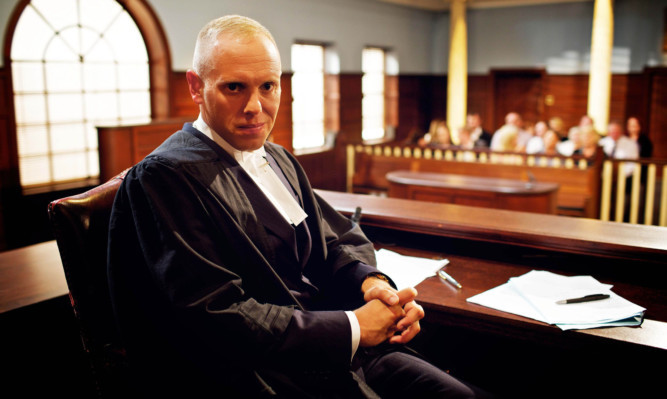
Rob Rinder presides over the cases in the UK version of hit American series Judge Judy, ITV’s Judge Rinder, back for a second series tomorrow at 2pm.
Away from the show, Rob, who can lay claim to having good friend Benedict Cumberbatch become ordained so he could marry him and his partner, is one of Britain’s top lawyers. He has handled major cases including the manslaughter of Iraqi detainees by British servicemen. Here, he tells us about his legal life.
Have you ever had to defend someone you knew was guilty?
That’s the question I always get asked at dinner parties and the simple answer is that you never would. If they did it then that’s the end of it. Like any other barrister or advocate in Scotland then all bets are off at that stage and you’d just say goodbye.
Have you had your suspicions?
The reason I might be suspicious is because I’ve had a chance to read the prosecution’s case and the evidence might be very strong. The first thing you do in that instance is to tell the person they are facing a very strong case and that they should plead guilty. They really need to think about what they’re going to do. But I’m there to make sure that when the Crown says they did it then they are able to prove it. I don’t make a decision on guilt or otherwise, that’s for the jury.
It really is true that it’s better that 11 guilty men should go free than one innocent man should go to jail.
Tell us about the Iraqi manslaughter case.
I can’t say much but all my preconceptions were radically altered by the experience of defending these extraordinarily brave young boys. You have these 17 and 18-year-old boys being trained to be soldiers who had to go and be policemen with the law shifting on the ground. As a result they did some dangerous things which ultimately led to an Iraqi being killed and the question was whether they were legally or morally culpable.
What about big cases here?
There are a couple that come to mind, both, like the Iraqi situation, involving very young men.
One involved gangs in Manchester. A boy who was on the edge of them had guns all over his house when police raided it. He faced a really severe sentence but he had a range of special needs and his defence was basically that he or his family faced death if he didn’t keep the guns. For that defence he needed to name either the individual or the gang. He named the gang and he was acquitted after what I have to say was a very emotional speech I gave to the jury.
Four days later his mother called me to say he’d been shot dead as he walked out of his door. He was just 17. I ended up speaking at his funeral.
And the other one?
It was another gang one, in London this time, in which the murder weapon had in effect been a dog. Two gangs faced off and as one boy tried to climb a fence to get away a dog was unleashed and pulled him off so the others could finish him off with a knife.
It was very challenging and complex case with dog DNA but, at the heart of it were young people who make really bad choices. My client was found guilty.
Your TV cases couldn’t be more different.
Absolutely. I had one involving whether or not someone should pay for a dog to be de-flea’d. I hadn’t realised that and as the dog looked sweet I put the damn thing on my lap. It was covered in them and I was itching half the day.
What else?
We had a case involving two artists who were in a fight about a piece of performance art one refused to give back. I had to rule on who should get the Humpty Dumpty!
Do the people in front of you ever irritate?
Oh yes. We deal with some child support agency cases and I had a mother who was claiming in excess of £3,000. The father wanted to countersue for the gifts that he had given the child over the years on the basis the mum had refused access. That included a set of second-hand toy ducks. At one stage I gave my gavel to the court usher because I felt fairly confident, bearing in mind what a moron he was, that it was going to end up flying at him.
How is your new telly career viewed by colleagues?
My chambers is really major we prosecuted the News of the World case and defended Rebekah Brooks and everyone here is the best and very busy. So they’re not worried about me doing something slightly frivolous. And the cases are based on real legal principles, so I think they’re generally happy about it all.
How realistic are TV depictions of courtrooms?
The old Rumpole of the Bailey was probably the truest representation. My best friend is Louisa Clein, the actress who played the daughter in Judge John Deed. We initially met to talk about her role but the series is totally unrealistic!

Enjoy the convenience of having The Sunday Post delivered as a digital ePaper straight to your smartphone, tablet or computer.
Subscribe for only £5.49 a month and enjoy all the benefits of the printed paper as a digital replica.
Subscribe